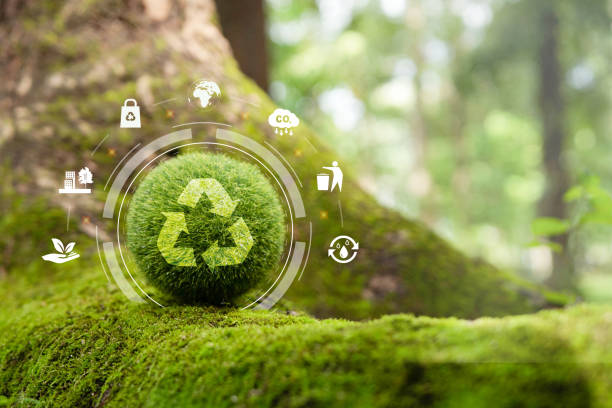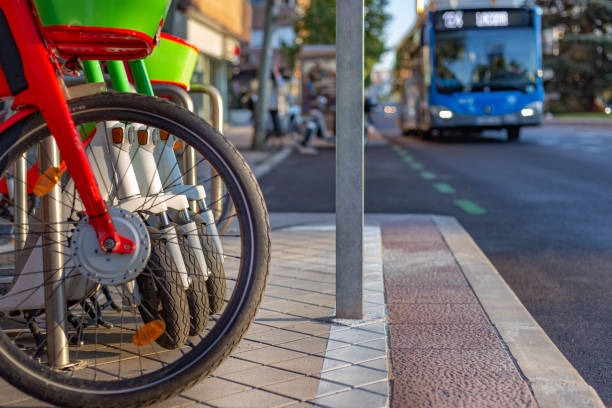Why Sustainable Living Matters?
Sustainability isn’t just a buzzword; it’s a necessity for ensuring the health of our planet and future generations. In this guide, we’ll explore various aspects of sustainable living, providing practical tips and insights to help you transition to an eco-friendly lifestyle. From home practices to travel tips, we’ve got you covered. Embracing sustainability means making conscious choices that benefit the environment, society, and economy.

Understanding Sustainability
Definition and Principles
Sustainability means meeting our needs without compromising future generations’ ability to meet theirs. It includes three main principles: Environmental Protection, preserving resources and reducing pollution; Social Responsibility, ensuring fair treatment and opportunities for all; and Economic Viability, supporting economic growth without harming the environment. Understanding these principles helps us make informed decisions, promoting a balanced and sustainable lifestyle. It encompasses three main principles:
- Environmental Protection: Preserving natural resources and reducing pollution.
- Social Responsibility: Ensuring fair treatment and opportunities for all.
- Economic Viability: Supporting economic growth without degrading the environment.
Environmental Impact
Environmental Impact
Unsustainable practices have severe consequences on the planet, including climate change, resource depletion, and biodiversity loss. Climate change, driven by increased greenhouse gases, leads to global warming and extreme weather events. Overuse of resources such as water, minerals, and forests can lead to shortages and environmental degradation, while habitat destruction causes species extinction and disrupts ecosystems. Unsustainable practices can have many other severe consequences on our planet:
- Increased Air and Water Pollution: Industrial activities and excessive use of chemicals lead to harmful emissions and contamination of water sources.
- Ocean Acidification: Increased CO2 levels result in more acidic oceans, negatively impacting marine life and ecosystems.
- Soil Degradation: Over-farming and deforestation lead to loss of fertile soil, reducing agricultural productivity and causing desertification.
- Health Impacts: Pollution and climate change contribute to health problems such as respiratory diseases, heat stress, and water-borne illnesses.
Recognizing these impacts is the first step toward adopting sustainable practices.
Sustainable Home Practices
Energy Efficiency
Reducing home energy consumption significantly impacts your carbon footprint and utility bills. Simple changes, like replacing incandescent bulbs with LEDs, using programmable thermostats, and considering solar panels, can save money and reduce emissions. Energy-efficient appliances and home improvements contribute to a more sustainable planet. These practices not only lower costs but also promote environmental conservation and energy efficiency in daily living.
- LED Lighting: Replace incandescent bulbs with energy-efficient LEDs to save energy and reduce electricity bills.
- Smart Thermostats: Use programmable thermostats to reduce heating and cooling costs by optimizing temperature settings based on your schedule.
- Renewable Energy: Consider solar panels or wind turbines for home energy production. These renewable sources can significantly cut down on your reliance on fossil fuels.
Water Conservation
Water is precious, and conserving it is essential for sustainability. Implementing water-saving measures at home reduces consumption and lowers bills. Install low-flow fixtures, collect rainwater, and fix leaks to save water. These practices help protect freshwater ecosystems and reduce energy required for water treatment. Efficient water use promotes sustainability and fosters a mindful approach to resource conservation. Save water and reduce your utility bills with these strategies:
- Low-Flow Fixtures: Install low-flow showerheads and faucets to reduce water usage without sacrificing performance.
- Rainwater Harvesting: Collect rainwater for gardening and outdoor use. This simple practice can save a significant amount of water annually.
- Fix Leaks: Regularly check for and repair any leaks in your plumbing. Even small leaks can waste a large amount of water over time.
By implementing these water-saving measures, you contribute to the conservation of one of our most precious resources.
Sustainable Transportation
Eco-Friendly Vehicles
Transportation is a major pollution source, and choosing eco-friendly vehicles can reduce your carbon footprint. Electric vehicles (EVs) and hybrids are sustainable alternatives to gasoline cars. EVs produce no emissions and have lower maintenance costs, while hybrids offer better fuel efficiency and lower emissions. Switching to these vehicles helps improve air quality and supports cleaner transportation options. Choosing the right vehicle depends on various factors, including your driving habits and budget.
Electric Vehicles (EVs):
- Pros: No emissions, Lower maintenance costs, Government incentives and rebates.
- Cons: Higher upfront cost, Limited range, Longer refueling time.
Hybrids:
- Pros: Better fuel efficiency, Longer range compared to EVs, Lower emissions than conventional cars.
- Cons: Higher initial cost, Complex maintenance.
Alternative Methods
Beyond eco-friendly vehicles, other transportation methods can reduce your carbon footprint. Cycling, walking, and public transport are excellent options. These methods lower emissions, reduce traffic congestion, and promote healthier lifestyles. Embrace other transportation methods to reduce your carbon footprint:
- Cycling: Great for short distances, cycling is not only eco-friendly but also improves your health and fitness.
- Walking: Zero emissions and excellent for your physical well-being, walking is the simplest form of sustainable transportation.
- Public Transport: Reduces individual carbon emissions and traffic congestion. Using buses, trains, and other public transport options can significantly lower your carbon footprint.
By choosing eco-friendly transportation options, you contribute to reducing air pollution and conserving energy.
Sustainable Food Choices
Local and Seasonal Eating
Supporting local farmers and eating seasonal produce reduces your food’s carbon footprint. Local and seasonal foods require fewer resources for transportation and storage, resulting in lower emissions. By buying from farmers’ markets and local producers, you support the local economy and promote sustainable agriculture. Seasonal eating ensures fresher, more nutritious food, fostering a closer connection to your food sources. Local and seasonal eating offers numerous benefits:
- Farmers’ Markets: Buy fresh, locally grown produce. This supports the local economy and reduces transportation emissions.
- Seasonal Foods: Choose fruits and vegetables that are in season for better taste and nutrition. Seasonal foods are often fresher and more flavorful.
Reducing Food Waste
Food waste is a major environmental issue. Reducing it can have positive impacts on the environment and your budget. Meal planning, composting, and proper food storage are practical strategies to minimize waste. These practices help you buy only what you need, reduce landfill waste, and enrich your garden. Reducing food waste promotes sustainability and resource conservation. Minimize waste with these practical tips:
- Meal Planning: Plan your meals to avoid over-purchasing. This helps in buying only what you need, reducing food waste.
- Composting: Turn food scraps into valuable compost for your garden. Composting reduces landfill waste and enriches soil.
- Proper Storage: Store food correctly to extend its shelf life. Proper storage techniques can prevent spoilage and waste.
Reducing food waste not only saves money but also conserves resources and reduces greenhouse gas emissions from landfills.
Reducing Plastic Waste
Plastic-Free Alternatives
Plastic waste is a significant environmental issue. Reducing plastic use in daily life decreases waste. Simple swaps like using reusable bags, glass containers, and bamboo products can make a big difference. Reusable items are durable and reduce single-use plastics. Choosing plastic-free alternatives helps protect marine life and reduce pollution, fostering a more sustainable lifestyle. Plastic-free alternatives are crucial for a sustainable lifestyle:
- Reusable Bags: Ditch plastic bags for reusable cloth bags. They are more durable and can be used multiple times.
- Glass Containers: Store food in glass instead of plastic. Glass containers are safer and more eco-friendly.
- Bamboo Products: Use bamboo toothbrushes and utensils. Bamboo is a sustainable material that grows quickly without the need for pesticides.
Cutting Down on Single-Use Plastics
Cutting Down on Single-Use Plastics
Single-use plastics contribute significantly to pollution. Making simple swaps can reduce their impact. Metal or silicone straws, cloth napkins, and reusable water bottles are great alternatives. These items save money in the long run and reduce plastic waste. Incorporating these habits promotes a sustainable culture and helps combat plastic pollution. Cutting down on single-use plastics is easy with these tips:
- Metal Straws: Replace plastic straws with metal or silicone ones. They are reusable and reduce plastic waste.
- Cloth Napkins: Use cloth instead of paper napkins. Cloth napkins can be washed and reused, reducing paper waste.
- Reusable Bottles: Carry a reusable water bottle instead of buying bottled water. This helps reduce plastic pollution and saves money.
Reducing plastic waste helps protect marine life and reduces pollution in our oceans and landfills.
Sustainable Travel
Eco-Friendly Travel Tips
Traveling impacts the environment, but sustainable practices can reduce this. Choosing direct flights minimizes emissions, as does using public transport. Staying in eco-friendly accommodations supports sustainability. These practices make travel enjoyable and environmentally friendly. By adopting eco-friendly travel habits, you can reduce your carbon footprint and promote sustainable tourism, benefiting both the environment and local communities. Eco-friendly travel can be enjoyable and sustainable:
- Direct Flights: Choose direct flights to minimize emissions. Fewer takeoffs and landings mean less fuel consumption.
- Public Transport: Use buses, trains, and other public transport options. Public transport reduces individual carbon emissions and is often more economical.
- Eco-Friendly Accommodations: Stay in hotels that prioritize sustainability. Look for accommodations that use renewable energy and have green certifications.
Sustainable Packing
Sustainable Packing
Sustainable packing reduces waste and promotes eco-friendly travel. Bringing reusable toiletries, using biodegradable products, and packing light are key strategies. These practices minimize waste and reduce the environmental impact of your trip. By adopting sustainable packing habits, you can contribute to reducing global carbon emissions and support eco-friendly travel, promoting a more sustainable and mindful approach to travel. Sustainable packing helps reduce waste and promote eco-friendly travel:
- Reusable Containers: Bring reusable toiletries and containers. Avoid single-use plastics by packing reusable items.
- Eco-Friendly Products: Use biodegradable soaps and shampoos. These products break down naturally and are less harmful to the environment.
- Minimalist Packing: Pack light to reduce the weight and fuel consumption of your travel. Carrying less weight means using less energy.
By adopting sustainable travel habits, you contribute to reducing global carbon emissions and promote eco-tourism.
Charting the Path Forward: How to Integrate Sustainability into Your Daily Life
Embracing sustainable living is more than a series of actions; it’s a transformative mindset that benefits both the individual and the planet. Each choice we make—from conserving water at home to choosing sustainable modes of transportation—contributes to a larger impact. By adopting the practical tips outlined in this guide, you can decrease your environmental footprint, support ethical practices, and promote economic sustainability in your community.
Sustainable living isn’t about perfection; it’s about progress. It involves continuous learning, adapting, and influencing others by sharing your journey. Whether you start with something as simple as switching to LED bulbs or as significant as adopting a plant-based diet, every step counts. Let’s cultivate a sustainable future together, making mindful decisions that ensure a thriving planet for generations to come.
Join the movement towards a greener, more sustainable future. Share your experiences, learn from others, and inspire your community. Remember, change starts with us. For more insights and resources on living an eco-friendly lifestyle, visit www.prettyhow.com. Together, we can make a difference—one sustainable choice at a time.
















